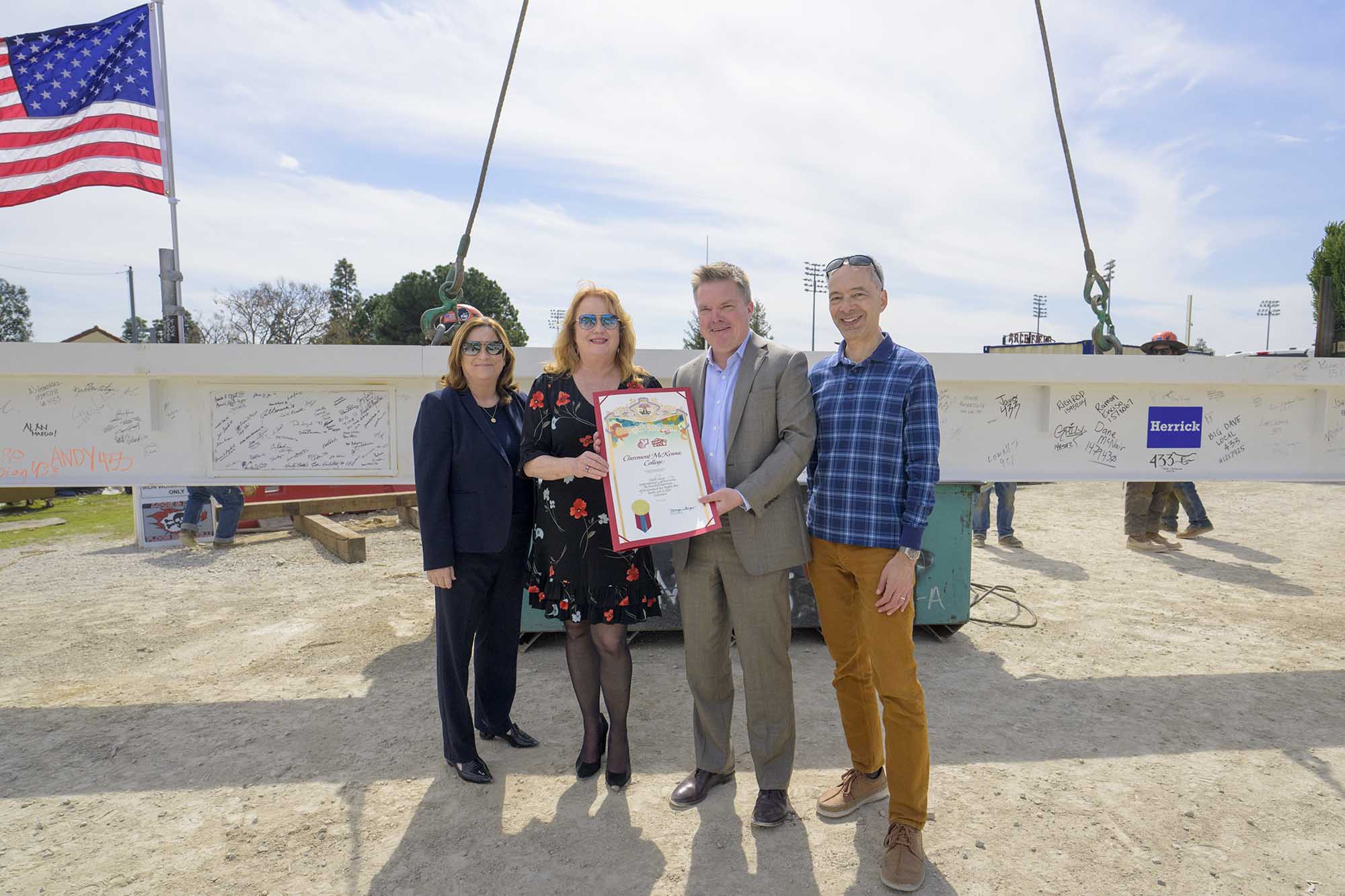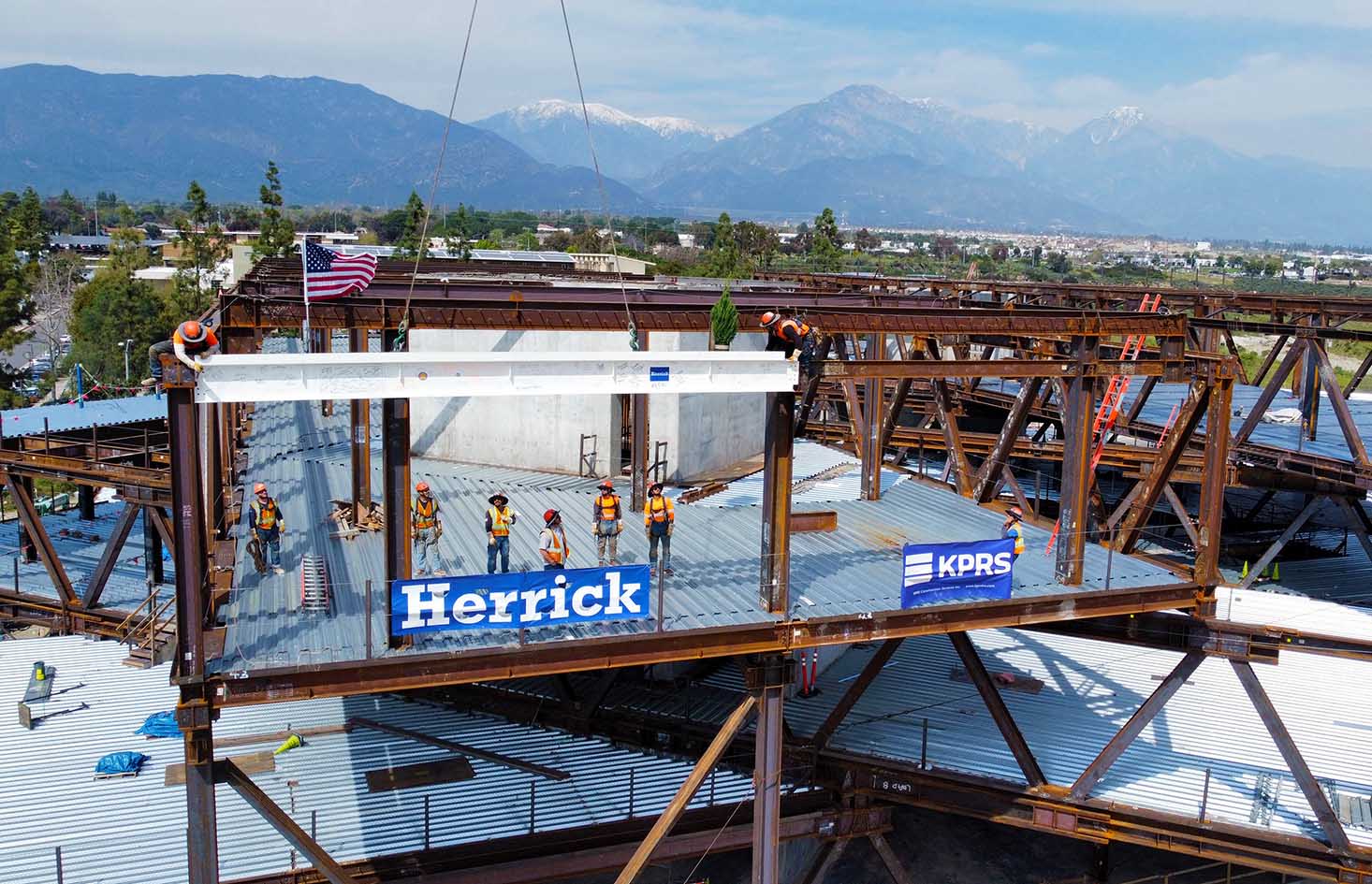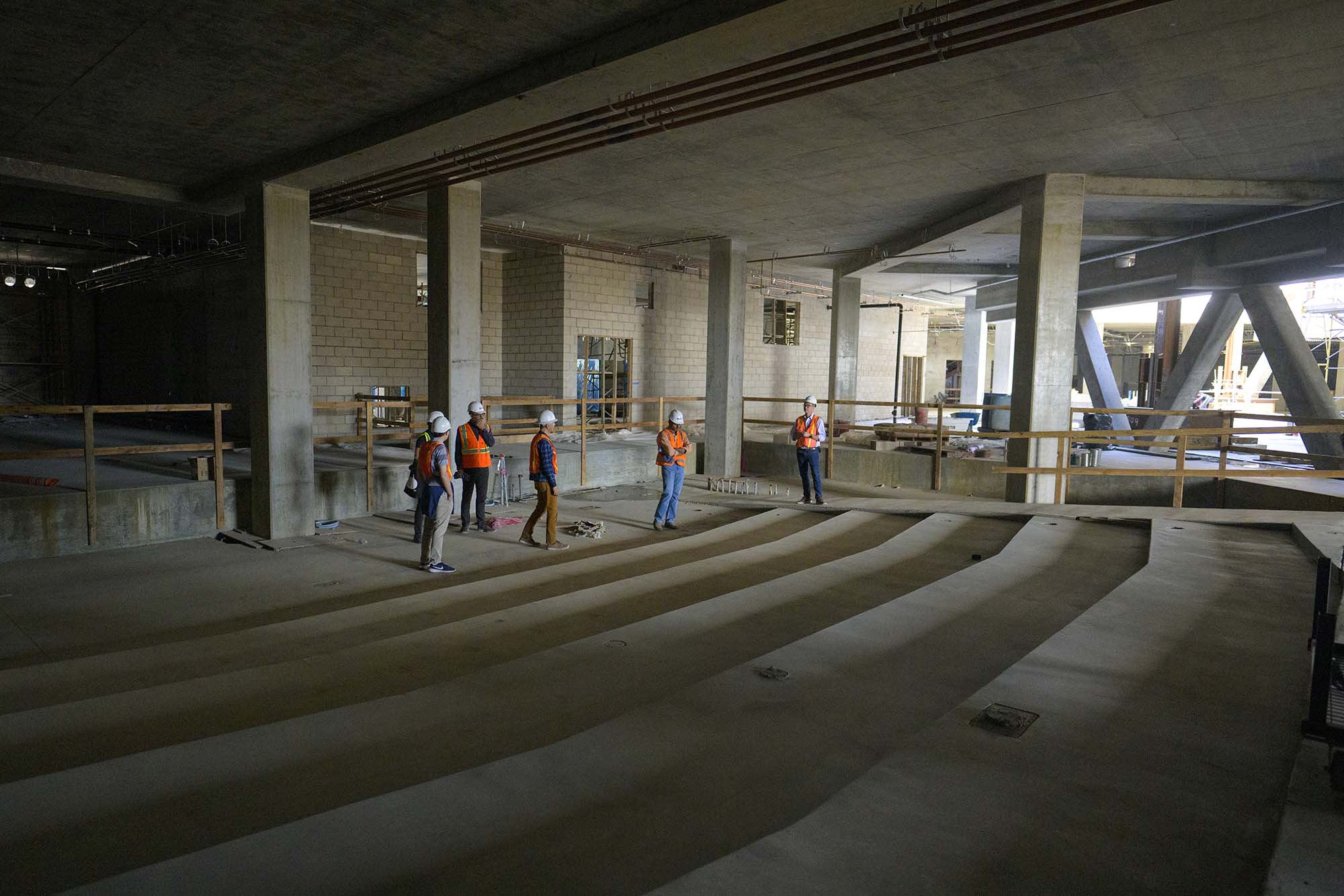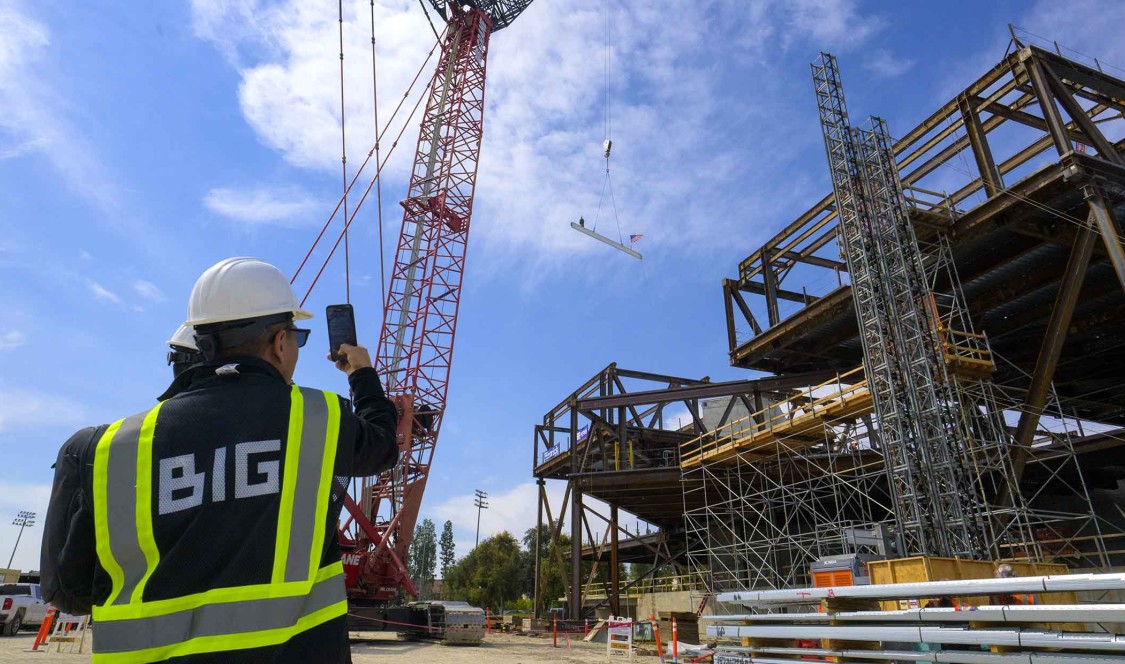
As the final structural steel beam was lowered into place, the Claremont McKenna College community celebrated the completion of the structural steel framework for the new Robert Day Sciences Center (RDSC). Signed by members of the project team, CMC trustees, and community members, the last piece of the steel puzzle represented a significant milestone toward realizing phase one of the College’s Master Plan to develop the Roberts Campus and construct the home for the new Kravis Department of Integrated Sciences.
“The legacy of our dear friend, Robert Day '65 P'12, lives on in this incredible, state-of-the-art facility. The new Robert Day Sciences Center and Kravis Department of Integrated Sciences allow for the infusion of science and computation deep into the fabric of CMC,” said David Mgrublian ’82 P’11, Chair of CMC’s Board of Trustees.

To mark the occasion, CMC community members, local government officials, and representatives from architectural firm, BIG-Bjarke Ingels Group (who designed the RDSC), gathered together at the site of the future 142,000-square-foot facility for a “Topping Out” ceremony on March 22.
“As we prepare our students for thoughtful and productive lives and responsible leadership in business, government, and the professions, the Robert Day Sciences Center represents an important milestone in creating dynamic interactions across all disciplines and supporting faculty and student scholarship to address the world’s challenges,” said Kenneth Valach ’82, a Board of Trustee member.

The state-of-the-art facility is designed to bring together core disciplines and support the College’s innovative undergraduate sciences curriculum, KDIS, organized around three overlapping foci (health, brain, planet). These three priorities interrelate with one another and provide opportunities for important intersections with the study of psychological sciences, economics and business, government and policy, philosophy and ethics, and other disciplines at CMC.
Upon its completion in Summer 2025, the RDSC will feature spaces that facilitate collaborative activity throughout, including the Innovation Studio, the Quantum Library, and the Agora—high-trafficked areas for study, group projects, multidisciplinary learning, presentations, and virtual convening, as well as classrooms and offices for CMC institutes, centers, and labs.

